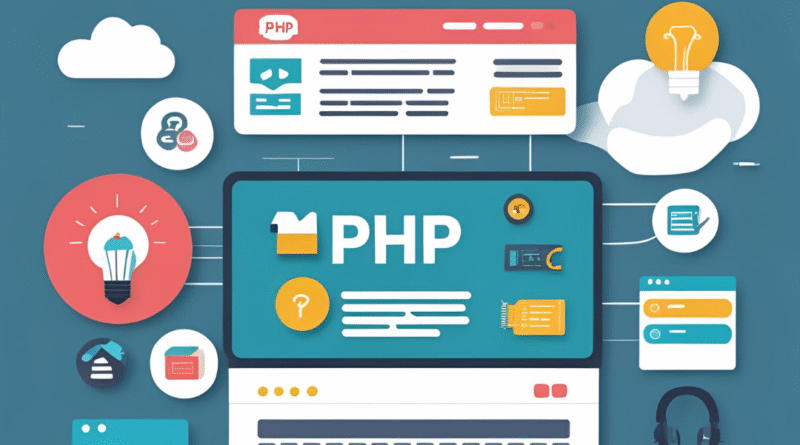PHP Working with Databases (MySQL):- Connecting to a databaseUnlock Your Web’s Potential: Connecting PHP to MySQL Databases
Unlock Your Web’s Potential: Connecting PHP to MySQL Databases
Ever wonder how websites store all that information – user profiles, product listings, blog comments? The secret often lies in the powerful combination of PHP and MySQL databases! If you’re building a dynamic website, mastering this connection is a fundamental step. Let’s dive into how you can easily connect PHP to your MySQL database and bring your web projects to life.
Why Connect PHP to MySQL?
Imagine a website where every time someone visits, all the data has to be re-typed. Sounds inefficient, right? That’s where databases come in! MySQL is a popular, open-source relational database management system (RDBMS) that’s incredibly efficient at storing, managing, and retrieving vast amounts of data. PHP, being a server-side scripting language, is perfectly designed to interact with these databases, allowing you to:
- Store User Data: From registration forms to login credentials.
- Manage Content: Powering blogs, e-commerce sites, and dynamic pages.
- Track Interactions: Recording user preferences, orders, and more.
- Build Dynamic Web Applications: Creating interactive and personalized experiences.
The Essential Steps to Connect
Connecting PHP to MySQL is straightforward. We’ll be using PHP’s built-in mysqli extension, which is the recommended way to interact with MySQL databases in modern PHP development.
Step 1: Gather Your Database Credentials
Before you write a single line of code, you need four crucial pieces of information about your MySQL database:
- Hostname (or Server Name): This is usually
localhostif your database is on the same server as your PHP script. Otherwise, it will be an IP address or a domain name provided by your hosting provider. - Username: The username for accessing your MySQL database. Often
rootfor local development, but your host will provide a specific one. - Password: The password associated with that username.
- Database Name: The specific database you want to connect to within your MySQL server.
Step 2: Write the PHP Connection Code
Here’s the core PHP code you’ll use to establish a connection:
PHP
<?php
$servername = "localhost"; // Or your host's server name/IP
$username = "your_username"; // Replace with your MySQL username
$password = "your_password"; // Replace with your MySQL password
$database = "your_database_name"; // Replace with your database name
// Create connection
$conn = new mysqli($servername, $username, $password, $database);
// Check connection
if ($conn->connect_error) {
die("Connection failed: " . $conn->connect_error);
}
echo "Connected successfully to MySQL database!";
// You'll typically close the connection at the end of your script
// $conn->close();
?>
Let’s break down what’s happening:
- Variables for Credentials: We define variables (
$servername,$username,$password,$database) to hold your connection details. This makes your code cleaner and easier to update. new mysqli(): This is where the magic happens! We create a newmysqliobject, passing in our credentials. This function attempts to establish the connection.- Error Handling (
$conn->connect_error): It’s crucial to check if the connection was successful. Ifconnect_errorexists, it means something went wrong, anddie()stops the script and displays an error message. This is vital for debugging. - Success Message: If all goes well, you’ll see “Connected successfully!”
Step 3: Test Your Connection
- Save the above code as a
.phpfile (e.g.,connect.php) in your web server’s document root (e.g.,htdocsfor Apache/XAMPP). - Make sure your MySQL server is running.
- Open your web browser and navigate to the URL of your file (e.g.,
http://localhost/connect.php).
If you see “Connected successfully to MySQL database!”, congratulations! You’ve successfully established a connection. If not, the error message will guide you to troubleshoot. Common issues include incorrect credentials, MySQL server not running, or firewall blocking access.
Best Practices for Secure Connections
While the basic connection is simple, consider these best practices for robust and secure applications:
- Never Hardcode Credentials in Production: For live applications, store your database credentials outside of your web-accessible files (e.g., in environment variables or a separate configuration file that’s not publicly accessible).
- Use Prepared Statements: When interacting with the database (inserting, updating, querying data), always use prepared statements to prevent SQL injection vulnerabilities.
- Close Connections: Although PHP often closes connections automatically at script termination, explicitly closing them with
$conn->close()is good practice, especially in long-running scripts or when you open multiple connections. - Error Logging: Instead of
die(), consider logging errors to a file for production environments, providing a more user-friendly experience while still capturing critical information.
Conclusion: Your Database Journey Begins!
Connecting PHP to a MySQL database is the gateway to building powerful, data-driven web applications. By understanding these fundamental steps and adopting best practices, you’re well on your way to creating dynamic websites that store, retrieve, and manage information efficiently. So go ahead, experiment, and unlock the full potential of your web development projects!




